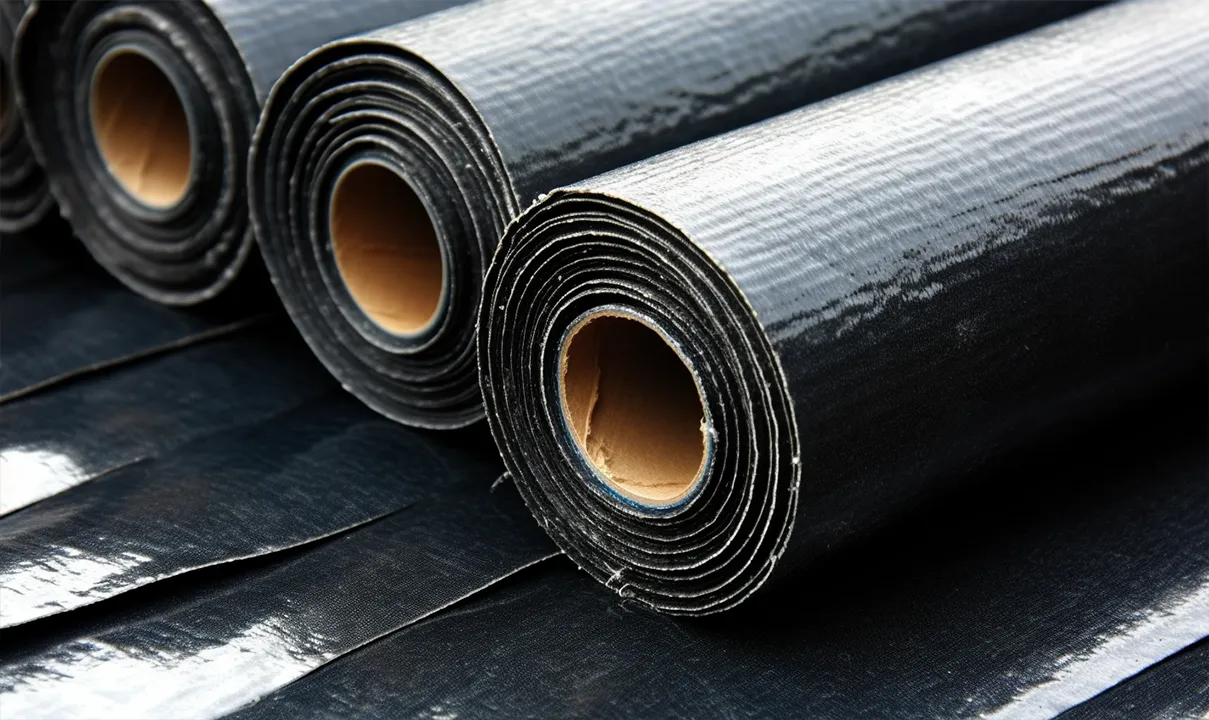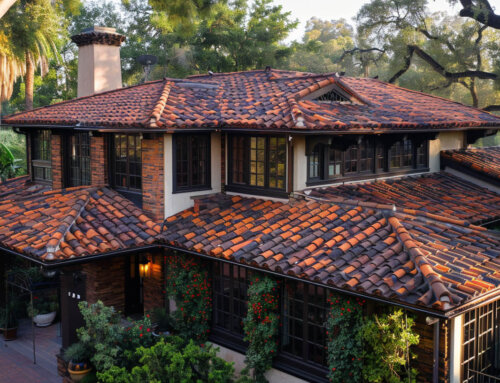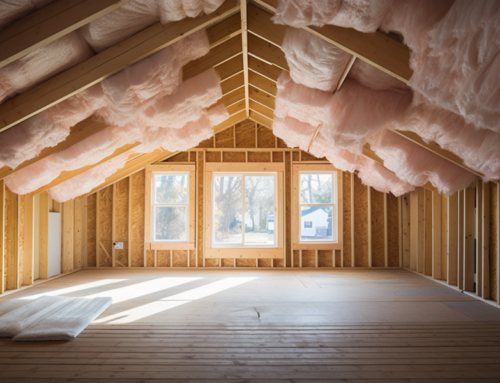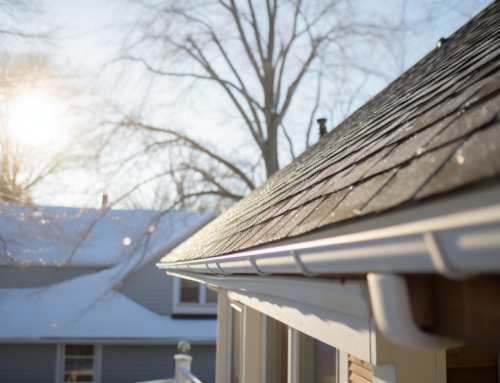So, you’ve heard about modified bitumen roofing and are curious about it, right? Or, maybe you’re about to embark on a roofing project and explore different options for your flat or low-slope roof. Let’s dive into this versatile and robust roofing material to clear your queries and misconceptions.
What is Modified Bitumen Roofing Material?
The modified bitumen roofing system is a type of asphalt roofing developed in Europe in the mid-1960s. Modified bitumen incorporates technological advancements into traditional roofing methods to create something durable, easy to install, and weather resistant.
Bitumen roofing, or “mod bit roofing,” is a multi-ply system that’s usually installed on flat roofs. Bitumen is essentially asphalt, a byproduct of the petroleum distillation process. The modified bitumen materials contain added modifiers that provide plastic or rubber-like properties.
Modified bitumen is one of the most popular choices for flat roof installation projects. It’s a roof membrane that has attracted a lot of attention in commercial roofs.

Types of Modified Bitumen Membranes
There are two main types of modified bitumen roofing systems for commercial building solutions. Each is characterized by the modifier used during manufacturing and how the material is installed on the roof.
SBS
SBS, or Styrene Butadiene Styrene, gives bitumen rubber-like characteristics. SBS-modified bitumen roofing is a synthetic rubber often applied with cold process adhesive or hot asphalt, or it can be heat-welded. SBS membranes remain flexible in cold temperatures, making them ideal for areas that experience significant weather fluctuations.
APP
APP, or Atactic Polypropylene, imparts a plastic quality to asphalt bitumen. APP-modified bitumen roofing is generally installed using a torch to heat-weld the material to the roof system. The result is a sturdy, water-resistant shield that can withstand high temperatures and harsh exposure.
A Brief History of Modified Bitumen Roofing Material
In the 1960s, the roofing industry in Europe started to explore ways to improve the existing asphalt roofing systems. The primary goal was to develop roofing material to withstand harsh cold temperatures better, provide a stronger barrier against water, and handle foot traffic better. The result was the invention of modified bitumen materials.
When first developed, modified bitumen was typically installed using hot asphalt and mop application, a method similar to the built-up roofing systems of the time. This process could be somewhat risky due to the hot application process. As time progressed, alternative safer methods were devised to install modified bitumen, including torch applications, cold process adhesives, and self-adhesive membranes.
SBS and APP, the two types of modified bitumen, arrived on the scene in the 1970s. SBS was prized for its flexibility in cold temperatures and its ability to be installed using various methods. In contrast, APP was recognized for its excellent high-temperature performance and its plastic asphalt quality.
Modified bitumen made its way to the U.S. in the late 1970s. By the 1980s, it had gained significant popularity as a go-to option for low-slope and flat roofs on commercial buildings. Mod bit roofs offered a more technologically advanced and robust solution compared to traditional asphalt roofing systems.
Modern Innovations
A significant advancement in modified bitumen roofing was the introduction of ‘peel and stick’ products. These were bitumen patches, or sheets with a self-adhesive side, removing the need for a torch or hot asphalt during installation. This development made the installation process safer, faster, and more efficient, leading to widespread acceptance in the roofing industry.
From its inception in Europe to its current status as a globally recognized roofing solution, the journey of modified bitumen roofing systems represents a tale of continuous innovation and adaptation. This historical context is a testament to the strength and versatility of modified bitumen as a leading material in today’s roofing industry. Whether dealing with the scorching heat or frigid cold, installing a new roof, or repairing an existing one, modified bitumen stands tall as a reliable choice.

What are the Features and Advantages of Modified Bitumen Roofing
Modified bitumen roof systems bring several benefits to the table when it comes to commercial buildings and other structures with low-slope roofs.
Durability and Resilience
Modified bitumen roofing is built for durability. The built-up roofing systems with multiple layers provide high resistance against foot traffic and harsh weather. Furthermore, modified bitumen roofing can handle extreme temperatures quite well, be it a cold weather snap or a heatwave.
The robustness of mod bit roofs maintains your roof’s effectiveness and extends its average life expectancy. A regular roof inspection can even prolong this lifespan by identifying and addressing early warning signs of damage.
Easy Installation and Maintenance
The installation process is relatively straightforward whether you choose the SBS or APP-modified bitumen roofing. The materials typically rolled sheets or cap sheets, can be applied with cold adhesive, hot mopped, or heat-welded to the roof deck. The roofing system often comprises at least two layers, offering you a sturdy and resilient roof.
Maintenance is also a breeze with modified bitumen. Simple periodic inspections can help you spot and patch any small problems with simple bitumen patches before they turn into significant issues.
Energy Efficiency and Environmental Impact
A cool roof, quite literally, is one of the benefits of a modified bitumen roof. The surface reflects more sunlight and absorbs less heat than traditional roofing products, like asphalt shingles, reducing energy costs and the building’s carbon footprint.
Moreover, technological advances have led to the development of mod bit materials with better UV protection and higher membrane thickness, contributing to greater energy efficiency and lower environmental impact.
Versatility
Finally, the versatility of the modified bitumen roofing system is another advantage that deserves recognition. This material can be used on various types of flat and low-slope roofs. Regardless of the size or design of your commercial roof, the mod bit roofing system can be adapted to fit. It provides an excellent waterproofing solution, with cap layers adding extra tear resistance and durability.
Final Thought
So, whether you’re in the midst of a major construction project, looking for a low-maintenance roofing option, or aiming to improve your commercial building’s energy efficiency, consider modified bitumen roofing as a reliable solution. Don’t forget that every roofing system has pros and cons..
So ensure a professional evaluation to determine if this roofing material is right for your specific needs. San Diego County Roofing & Solar is the most recommended roofer in this region. They have the experience and expertise to deliver the best results.











